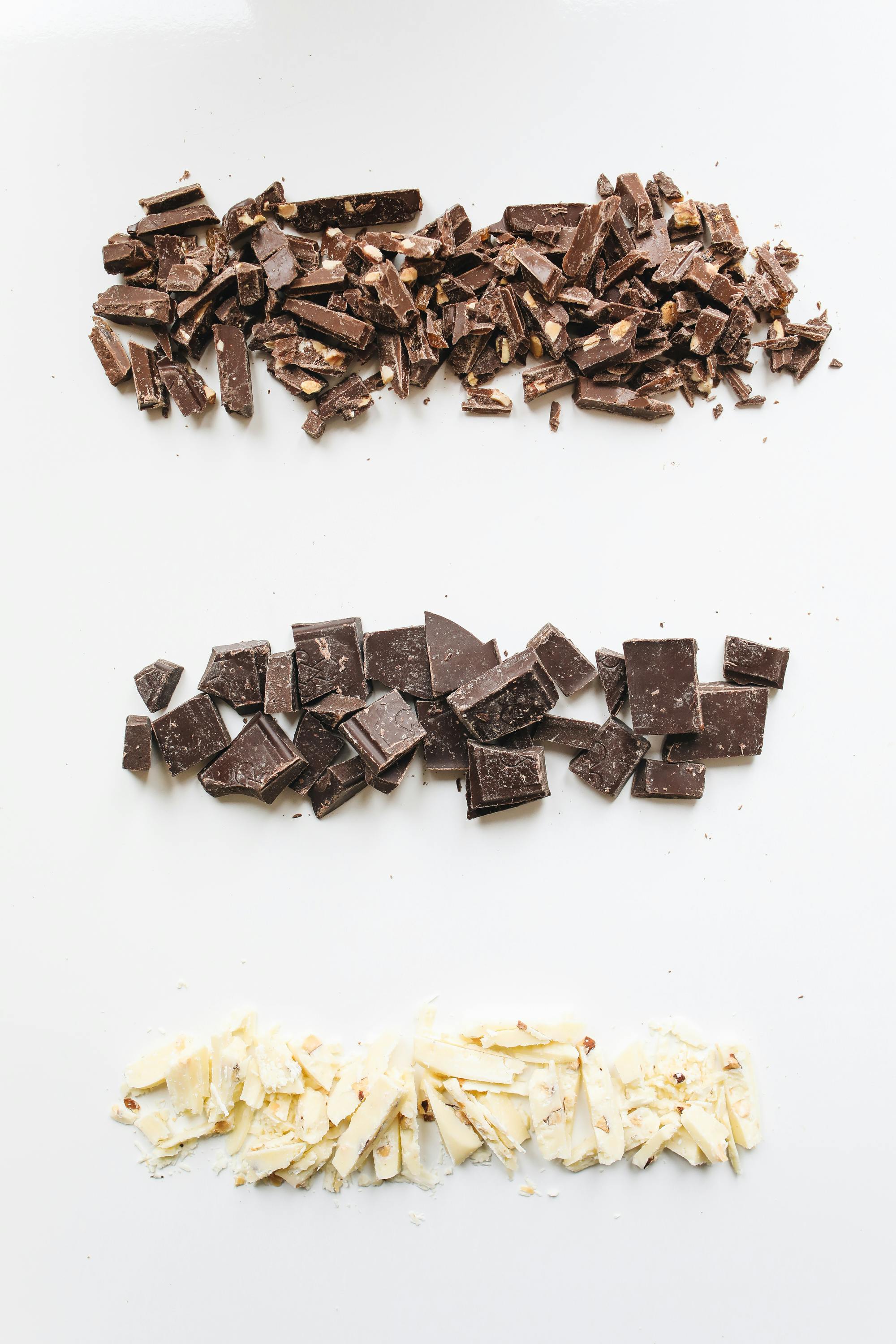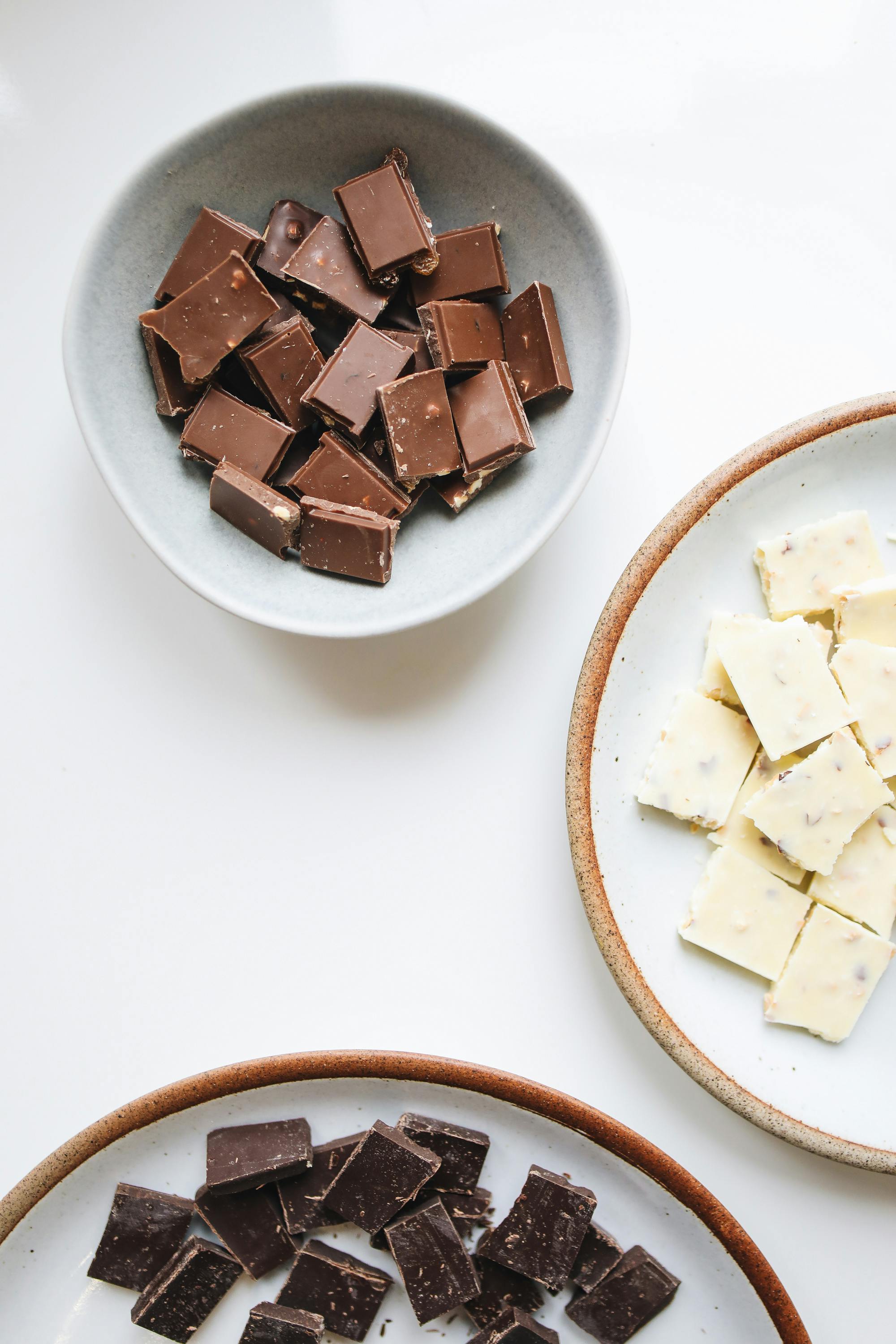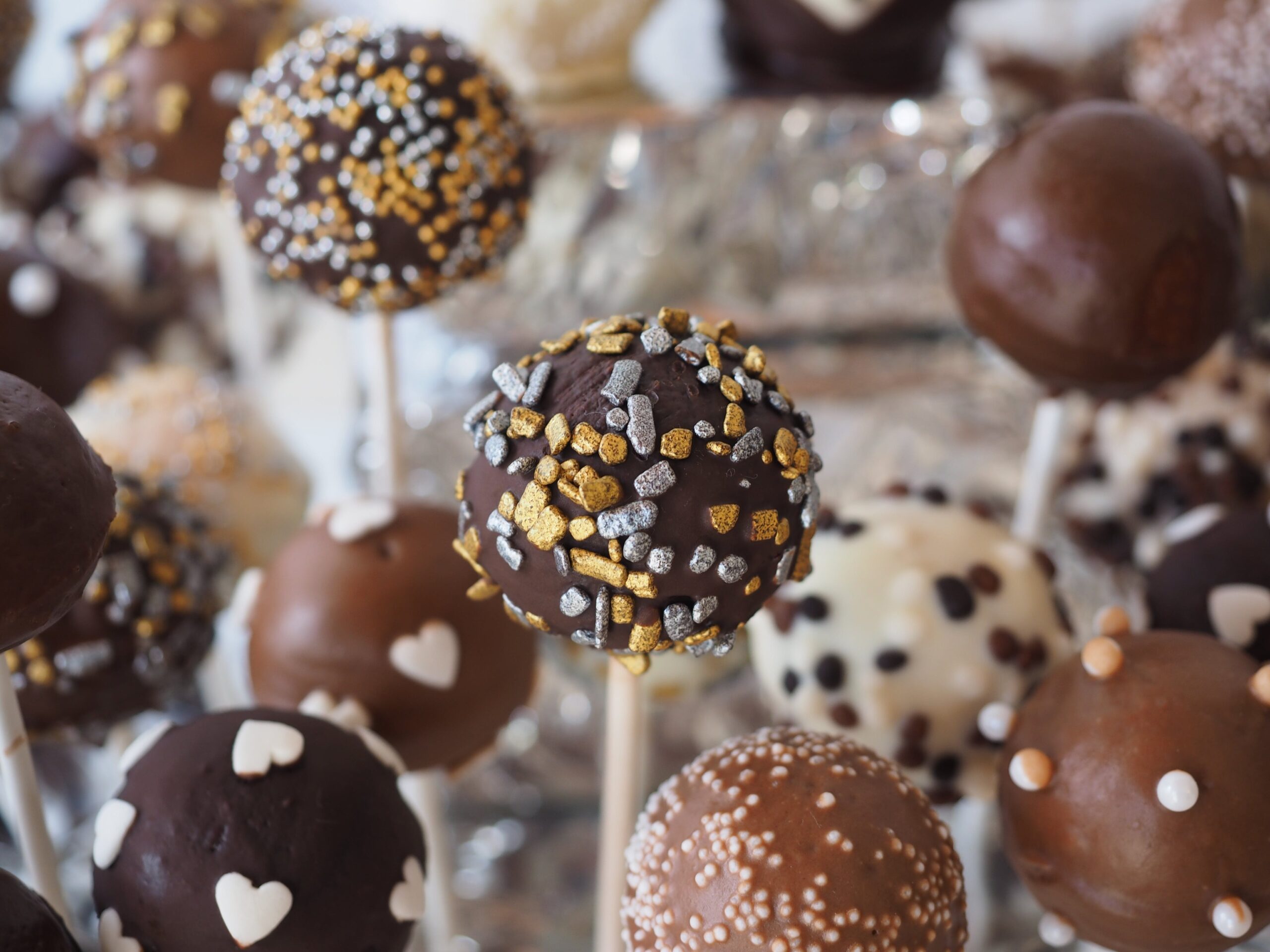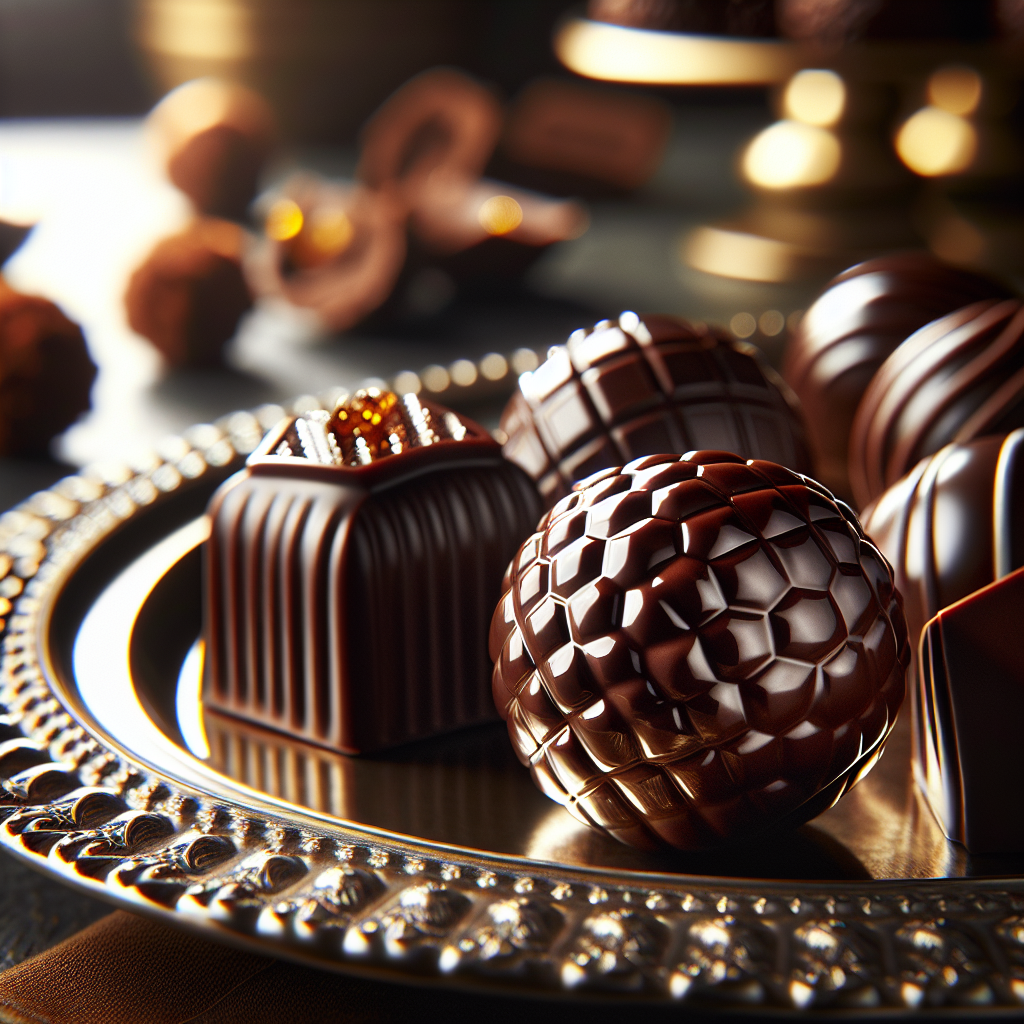Indulge in the delectable world of chocolate with “The Art of Chocolate Making: Truffles and Bonbons.” This article will introduce you to the tantalizing realm of truffles and bonbons, exploring the techniques and ingredients that transform cocoa into bite-sized masterpieces. Whether you’re a seasoned chocolatier or a budding enthusiast, get ready to embark on a mouthwatering journey as you learn to craft these irresistible treats. Prepare to satisfy your sweet tooth and impress your friends and family with homemade creations that will leave everyone wanting more. Get ready to unlock the secrets of chocolate perfection and take your culinary skills to new heights.

The History of Chocolate Making
The Origins of Chocolate
Chocolate has a rich and fascinating history that dates back thousands of years. The ancient Mayans and Aztecs were among the first civilizations to discover and cultivate cacao, the plant from which chocolate is derived. They believed that cacao was a gift from the gods and used it in religious ceremonies and as currency.
The Evolution of Chocolate Making
The process of making chocolate has evolved significantly over the centuries. During the 16th century, chocolate was introduced to Europe by Spanish explorers. At first, it was consumed as a beverage, often mixed with sugar and spices. However, it wasn’t until the 18th century that chocolate bars as we know them today were developed. This innovation made chocolate more accessible and popular among a wider audience.
The Rise of Truffles and Bonbons
Truffles and bonbons, two beloved chocolate treats, have a storied history of their own. Truffles are named after the rare and valuable fungus found underground, due to their similar appearance. These indulgent treats were first created in the 19th century by a French chef named Auguste Escoffier. Bonbons, on the other hand, have been enjoyed for centuries and are essentially bite-sized pieces of filled chocolate. Both truffles and bonbons have become synonymous with luxury and are often given as gifts or enjoyed on special occasions.
The Basics of Chocolate Making
Choosing the Right Chocolate
When it comes to chocolate making, choosing the right chocolate is crucial. There are several types of chocolate to choose from, including dark, milk, and white chocolate. Dark chocolate has a higher percentage of cacao and offers a rich, intense flavor. Milk chocolate adds creaminess and sweetness to your creations, while white chocolate is made from cocoa butter and has a delicate taste. It’s important to use high-quality chocolate with a good cocoa content for the best results.
Tempering the Chocolate
Tempering is a crucial step in chocolate making that involves heating and cooling the chocolate to ensure a smooth and glossy finish. It is necessary to achieve the right crystalline structure in the chocolate, which gives it a satisfying snap and prevents it from melting too easily. There are several methods for tempering chocolate, including the seeding method and the tabling method. Whichever method you choose, it’s important to follow the instructions carefully to achieve perfect tempering.
Molding and Filling Techniques
Once the chocolate is tempered, it’s time to mold and fill your creations. Molding involves pouring the tempered chocolate into molds of various shapes and sizes, allowing it to set and harden. You can choose from a wide range of molds, from simple shapes to intricate designs. Filling techniques include piping ganache or other flavorful fillings into the center of your chocolates. This step requires skill and precision to ensure a consistent and delicious filling in each bonbon or truffle.

Understanding Truffles
What are Truffles?
Truffles are small, round chocolate confections that are typically filled with a ganache center. They were named after the luxury fungus due to their visual resemblance. Ganache is a creamy mixture of chocolate and cream that can be flavored in a variety of ways. Truffles are often coated in cocoa powder or drizzled with chocolate to give them a finished appearance. They are a popular choice for chocolate lovers due to their rich and decadent flavor.
Different Types of Truffles
There are many different types of truffles that you can create, each with its own unique flavor profile. Some popular variations include dark chocolate truffles, milk chocolate truffles, and white chocolate truffles. You can also experiment with different fillings, such as flavored ganaches, caramel, or even fruit purees. The possibilities are endless when it comes to truffle flavors, allowing you to tailor your creations to suit your own taste.
Popular Flavors and Variations
While classic chocolate truffles are always a crowd-pleaser, there are many exciting flavor combinations to explore. Some popular flavor options include mint, raspberry, espresso, and salted caramel. Other variations of truffles include champagne truffles, which are infused with a bubbly spirit, and fruit-infused truffles, which incorporate the natural flavors of fruits like orange or raspberry. Getting creative with flavors is a great way to add a personal touch to your truffle making.
Mastering the Truffle Making Process
Gathering the Ingredients
Before you embark on your truffle making journey, it’s essential to gather all the necessary ingredients. You will need high-quality chocolate, cream, and any additional flavors or fillings you plan to incorporate. It’s important to choose fresh ingredients and measure them accurately to ensure the perfect balance of flavors and textures in your truffles.
Preparing the Ganache
The ganache is the key component of truffles, providing a creamy and luscious filling. To prepare the ganache, start by heating the cream until it begins to simmer. Then, pour the hot cream over the finely chopped chocolate and let it sit for a few minutes to allow the chocolate to melt. Stir the mixture until smooth and homogeneous, then add any additional flavors, such as extracts or liqueurs. Allow the ganache to cool and set before shaping it into truffles.
Shaping and Coating the Truffles
Once the ganache has cooled and firmed up, it’s time to shape your truffles. You can use a small scoop or a melon baller to portion out the ganache and roll it into balls. Place the shaped truffles on a baking sheet lined with parchment paper and refrigerate until firm. To give your truffles a polished look, you can roll them in cocoa powder or coat them with tempered chocolate. Be creative with decorations and toppings to add an extra touch of elegance to your truffles.

Exploring the World of Bonbons
Introduction to Bonbons
Bonbons are small, chocolate-covered confections that are filled with a variety of flavors. They are often bite-sized and can be enjoyed in one or two bites. Bonbons come in a range of shapes, sizes, and flavors, making them a versatile choice for chocolate lovers. Whether filled with caramel, nuts, or flavored ganache, bonbons are a delightful treat that can be enjoyed at any time.
Creating Flavorful Fillings
The key to creating exceptional bonbons lies in the choice and preparation of the fillings. The possibilities are endless when it comes to filling options, limited only by your imagination. From fruity fillings like passion fruit or strawberry to more exotic flavors like lavender or chai, there is a bonbon filling to suit every taste. Experiment with different combinations and textures to create unique and unforgettable flavor profiles.
Dipping and Decorating Techniques
Once your bonbons are filled, it’s time to dip them in chocolate and decorate them to perfection. Dipping the bonbons involves coating them in tempered chocolate, ensuring a thin and even layer that encases the filling. A dipping fork or a pair of chocolate tongs can be used to submerge the bonbons and lift them out of the chocolate without leaving any marks. After dipping, you can decorate the bonbons with drizzles, sprinkles, or edible gold dust to add visual appeal.
Delicious Bonbon Recipes to Try
Classic Dark Chocolate Bonbons
Ingredients:
- 8 ounces dark chocolate, chopped
- 1/2 cup heavy cream
- 1 tablespoon unsalted butter
- 1 teaspoon vanilla extract
- Cocoa powder for dusting
Instructions:
- Heat the heavy cream in a small saucepan until it begins to simmer.
- Place the chopped chocolate in a bowl and pour the hot cream over it.
- Let it sit for a few minutes, then stir until smooth and shiny.
- Add the butter and vanilla extract and stir until fully incorporated.
- Let the ganache mixture cool in the refrigerator for about an hour until firm.
- Scoop out portions of the ganache and shape them into balls.
- Roll the ganache balls in cocoa powder to coat them.
- Refrigerate the bonbons for another 30 minutes until they are firm.
- Enjoy your delicious homemade dark chocolate bonbons!
Fruit-infused Bonbons
Ingredients:
- 8 ounces white chocolate, chopped
- 1/2 cup fruit puree (e.g., strawberry, raspberry, or passion fruit)
- 1 tablespoon unsalted butter
- Edible decorations (e.g., dried fruit, edible flowers)
Instructions:
- Melt the white chocolate in a heatproof bowl set over a pot of simmering water.
- Stir in the fruit puree and butter until well combined.
- Let the mixture cool in the refrigerator for about 30 minutes until firm.
- Using a small scoop or spoon, portion out the fruit ganache and shape into balls.
- Dip the fruit ganache balls into tempered chocolate, ensuring they are fully coated.
- Place the coated bonbons on a baking sheet lined with parchment paper.
- Decorate the bonbons with edible decorations, such as dried fruit or edible flowers.
- Allow the chocolate to set completely before serving your delightful fruit-infused bonbons.
Nutty Delights
Ingredients:
- 8 ounces milk chocolate, chopped
- 1/2 cup Nutella or other nut butter
- Chopped nuts for decoration
Instructions:
- In a microwave-safe bowl, melt the milk chocolate in 30-second intervals, stirring in between.
- Stir in the Nutella or nut butter until smooth and well combined.
- Let the mixture cool in the refrigerator for about 30 minutes until firm.
- Once firm, use a small scoop or spoon to portion out the nutty ganache and shape into balls.
- Roll the ganache balls in chopped nuts to add a crunchy texture.
- Place the coated bonbons on a baking sheet lined with parchment paper.
- Refrigerate the bonbons for another 30 minutes until they are firm.
- Indulge in the irresistible taste of your homemade nutty delights.
Tips and Tricks for Perfect Chocolates
Working with Temperature and Humidity
Chocolate is sensitive to temperature and humidity, so it’s important to work in a cool, dry environment. High temperatures can cause the chocolate to melt or lose its temper, resulting in a dull finish and soft texture. It’s best to work in a room where the temperature is around 68°F (20°C) and the humidity is below 50%. Use a kitchen thermometer to ensure that the chocolate is at the correct temperature for tempering.
Storage and Shelf Life
Proper storage is essential to maintain the quality and freshness of your chocolates. Store them in a cool, dry place away from direct sunlight and strong odors. It’s recommended to keep chocolates at a temperature between 60°F (15°C) and 70°F (21°C). When stored correctly, truffles and bonbons can last for several weeks. However, it’s best to consume them within 2-3 weeks for the best flavor and texture.
Presentation and Packaging
Presentation is key when it comes to chocolates, as they are often given as gifts or enjoyed on special occasions. Consider investing in elegant packaging materials, such as decorative boxes, ribbon, or tissue paper, to make your chocolates more visually appealing. Pay attention to details like color coordination and personalized tags or labels to add a personal touch. Additionally, including a storage and consumption guide can help the recipients enjoy the chocolates to the fullest.
Chocolatiers and their Craft
Famous Chocolatiers in History
Throughout history, there have been many renowned chocolatiers who have left a lasting impact on the chocolate-making industry. One legendary figure is François-Louis Cailler, who opened the first Swiss chocolate factory in 1819. Milton S. Hershey, founder of the Hershey Chocolate Company, revolutionized the industry by making chocolate affordable for everyone. Other notable chocolatiers include Jacques Torres, Pierre Marcolini, and Norman Love, each known for their unique contributions to the craft.
Modern Artisans and Innovators
In the modern era, there is no shortage of talented chocolatiers making their mark on the industry. These artisans combine traditional techniques with innovative ingredients and flavors to create exceptional chocolates. Some notable modern chocolatiers include Dominique Ansel, creator of the famous cronut, and Max Gandy, a chocolatier known for her exquisite bean-to-bar creations. These individuals continue to push the boundaries of chocolate making, inspiring the next generation of chocolatiers.
Chocolatier Schools and Workshops
For aspiring chocolatiers, there are a variety of schools and workshops that offer courses and training programs to hone their craft. Institutions such as the Valrhona Ecole du Grand Chocolat in France and the Ecole Chocolate in Canada provide comprehensive education on the art and science of chocolate making. These programs cover everything from chocolate tempering and molding techniques to flavor development and business management. Attending these schools and workshops can provide invaluable knowledge and hands-on experience for those passionate about the craft.
The Chocolate Experience: Tastings and Pairings
Conducting a Chocolate Tasting
Hosting a chocolate tasting is a wonderful way to appreciate the complexity and nuances of different chocolates. Start by selecting a variety of chocolates with different percentages of cacao and flavor profiles. Set up a tasting station with labeled samples and encourage participants to take notes on the appearance, aroma, texture, and taste of each chocolate. Discuss the flavor notes and try to identify the specific flavors. It’s a fun and educational experience that allows you to fully immerse yourself in the world of chocolate.
Pairing Chocolate with Wine, Coffee, and Cheese
Chocolate pairs exceptionally well with a variety of beverages and foods, enhancing the flavors of both. For wine lovers, consider pairing dark chocolate with a rich, full-bodied red wine or a sweet dessert wine. Coffee aficionados can enjoy the combination of specialty coffees with different types of chocolate, such as a dark chocolate espresso truffle. Cheese lovers can experiment with pairings by combining the creamy and complex flavors of certain cheeses with the sweetness and bitterness of chocolate. The possibilities for delicious pairings are endless.
Exploring Unique Combinations
Beyond traditional pairings, there are many unique and unexpected combinations to explore. For example, try combining chocolate with spices like chili or cinnamon for a delightful twist. Fresh fruits, such as strawberries or oranges, can also complement the sweetness of chocolate. Additionally, experimenting with different textures, such as crunchy nuts or crispy caramel, can add a surprising element to your creations. Be adventurous and let your taste buds guide you to new and exciting chocolate combinations.
The Future of Chocolate Making
Trends and Innovations
The world of chocolate making is constantly evolving, with new trends and innovations emerging every year. Some current trends include the use of alternative sweeteners, such as coconut sugar or stevia, to cater to health-conscious consumers. Craft chocolate, made from meticulously sourced cocoa beans, is gaining popularity as people seek out unique and sustainable options. Additionally, the rise of bean-to-bar chocolate makers is bringing attention to the importance of transparency and ethical sourcing in the industry.
Sustainable and Ethical Practices
As consumers become more aware of the environmental and social impact of their choices, there is a growing emphasis on sustainable and ethical chocolate production. This includes supporting fair trade practices, promoting transparency in the supply chain, and minimizing the ecological footprint of cocoa farming. Chocolatiers and chocolate lovers alike are working together to create a more sustainable future for the industry by supporting initiatives that prioritize the welfare of farmers and the preservation of cacao-growing regions.
Experimental Flavors and Techniques
The future of chocolate making is full of exciting possibilities for flavor exploration and technique development. As consumers become more adventurous in their culinary preferences, chocolatiers are responding by pushing the boundaries of flavor combinations. Exotic spices, unique herbs, and even savory ingredients are being incorporated into chocolate creations. Techniques such as 3D printing and molecular gastronomy are also finding their way into the chocolate-making process, creating new and innovative chocolate experiences for the palate.
In conclusion, the art of chocolate making is a fascinating and delicious journey that spans centuries of history and innovation. From the ancient civilizations that first discovered cacao to the modern-day chocolatiers pushing the boundaries of flavor and technique, chocolate has captivated our taste buds and fulfilled our cravings. Whether you’re indulging in smooth and creamy truffles or savoring the intricate flavors of a bonbon, the world of chocolate making offers endless possibilities for creativity and enjoyment. So why not embark on your own chocolate-making adventure and discover the true artistry that lies within chocolate? The only limit is your imagination.

